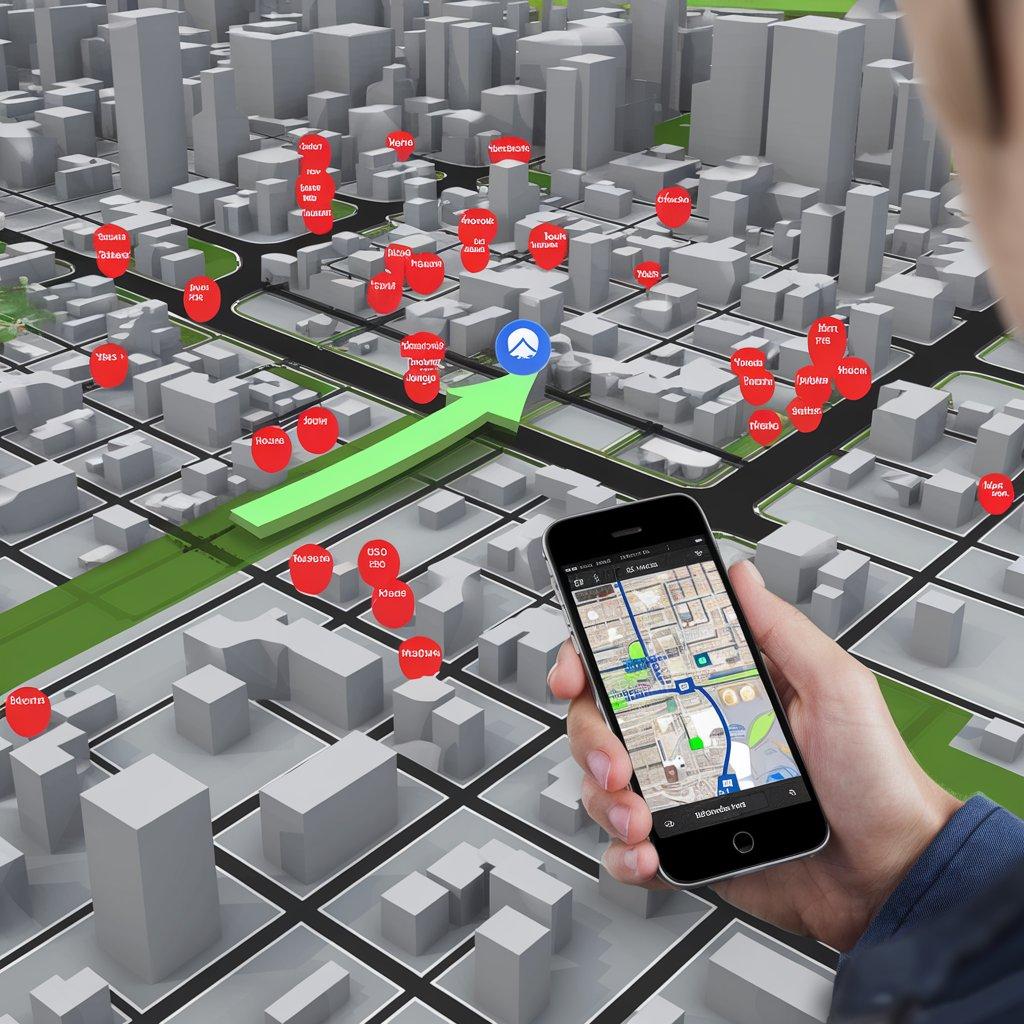Augmented Reality Navigation: Trends in Wearable Technology

The augmented reality (AR) navigation market is evolving rapidly, driven by advancements in wearable technology. As consumers seek more intuitive and immersive ways to navigate their environments, wearables such as smart glasses, AR headsets, and smartwatches are playing an increasingly pivotal role. This article explores the current trends in wearable technology that are shaping the AR navigation landscape.
The augmented reality (AR) navigation market is expected to reach USD 6.33 billion by 2029 from USD 1.17 billion in 2024, at a CAGR of 40.3% during the 2024-2029 period.
Multiple companies like Volkswagen (Germany), Mercedes-Benz Group AG and many others are investing is augmented reality (AR) navigation which is increasing the opportunity for growth in the AR navigation market. The AR navigation industry is continuously developing, with the presence of multiple players. Currently, the North America region is contributing significantly to the growth of the AR navigation industry. Similarly, Asia Pacific, Europe and RoW regions are expected to be the growing market for the forecasted period.
The Rise of Wearable AR Devices
-
Smart Glasses and AR Headsets
Smart glasses and AR headsets, such as Microsoft’s HoloLens and Google Glass, are at the forefront of the AR navigation trend. These devices overlay digital information directly onto the user's field of vision, providing real-time navigation prompts without requiring users to look down at their smartphones. This hands-free capability is particularly beneficial for industries such as logistics, manufacturing, and emergency services, where maintaining visual awareness of the surroundings is critical. -
Integration with IoT
The convergence of AR technology with the Internet of Things (IoT) enhances the functionality of wearable devices. Wearables can connect with various IoT devices, allowing for seamless data exchange and providing users with contextual information that enhances navigation experiences. For instance, smart glasses can receive updates from connected infrastructure, such as traffic lights and public transport schedules, offering users real-time guidance. -
Health and Fitness Applications
Wearable AR technology is also making strides in health and fitness navigation. Devices that track physical activity and offer AR navigation can help users navigate outdoor trails or urban environments while providing real-time feedback on their performance. This trend is appealing to fitness enthusiasts and those engaged in outdoor activities, creating a unique niche in the AR navigation market.
Download PDF Brochure @ https://www.marketsandmarkets.com/pdfdownloadNew.asp?id=150009689
Key Trends Influencing Wearable AR Navigation
-
Miniaturization of Technology
Advances in miniaturization have made it possible to create lightweight, compact AR wearables that are more comfortable for everyday use. As technology becomes less obtrusive, consumer acceptance and adoption are likely to increase. Enhanced battery life and processing power also contribute to the viability of wearables in navigation applications. -
Improved User Interfaces
The development of intuitive user interfaces for AR navigation is crucial for enhancing user experience. Gesture control, voice commands, and eye-tracking technology are being integrated into wearable devices, allowing users to interact seamlessly with navigation features without manual input. This level of interactivity improves usability and accessibility, particularly for non-tech-savvy individuals. -
Focus on Augmented Reality Navigation in Retail
Retailers are beginning to adopt AR navigation technology within their stores, using wearables to guide customers to specific products or promotions. For instance, smart glasses can direct shoppers through complex store layouts, offering personalized shopping experiences. This trend not only enhances customer satisfaction but also drives sales and improves store efficiency. -
Collaborative Navigation Solutions
The emergence of collaborative navigation solutions allows multiple users to share their AR navigation experiences in real time. For example, wearables can facilitate group navigation for tourists exploring a city together, overlaying points of interest and routes for all participants. This social aspect adds a layer of engagement, making navigation more enjoyable and informative.
Challenges and Considerations
Despite the promising trends, the wearable AR navigation market faces several challenges:
-
Privacy and Data Security: The collection of location data raises concerns about user privacy. Wearable manufacturers must prioritize secure data handling practices to build trust among consumers.
-
Adoption Barriers: While interest in wearable AR technology is growing, consumer adoption can be slow. Education about the benefits and practical applications of these devices is crucial for driving market growth.
-
Technological Limitations: Current AR wearable devices may still face challenges related to battery life, processing speed, and display quality. Continuous advancements are necessary to improve performance and user experience.
Future Outlook
The integration of wearable technology in the augmented reality navigation market is set to expand significantly. With analysts predicting robust growth in both AR and wearable markets, businesses that innovate in this space are likely to gain a competitive edge. As technology continues to improve, we can expect to see more sophisticated and user-friendly AR navigation solutions, enhancing how we navigate our surroundings.
Wearable technology is transforming the augmented reality navigation market, providing users with immersive and intuitive experiences. As smart glasses and other wearables become more advanced and widely adopted, they will redefine how individuals navigate their environments. By embracing these trends, businesses can create innovative solutions that enhance user experiences and drive market growth, ultimately reshaping the future of navigation
- Art
- Causes
- Crafts
- Dance
- Drinks
- Film
- Fitness
- Food
- Games
- Gardening
- Health
- Home
- Literature
- Music
- Networking
- Other
- Party
- Religion
- Shopping
- Sports
- Theater
- Wellness
- IT, Cloud, Software and Technology


